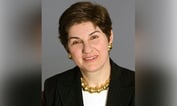In Social Security Talking Points, Part 1, the role of the Social Security representative, the retirement benefit calculation, the Social Security benefits statement and understanding the terms “Full Retirement Age” and “Primary Insurance Amount” were discussed.
This installment will discuss more advanced topics—explaining Social Security retirement income eligibility, COLA adjustments, reduction for taking benefits early, Delayed Retirement Credits and the Annual Earnings Test. The purpose of this five-part series is to embolden the advisor to be proactive, rather than reactive. The advisor is the client’s trusted advisor and must be prepared for the client’s questions on Social Security?
Social Security Retirement Income Eligibility
There are only three requirements to be eligible for Social Security retirement benefits:
- Having earned 40 credits
- Attaining the age of 62
- Filing an Application
FORTY CREDITS: The Social Security Administration used to say that folks needed to earn 40 “quarters,” but has changed this requirement to 40 credits. The maximum number of credits that clients can earn per calendar year is four, thus earning 40 credits will take a minimum of 10 years. It is not required that clients work in EACH quarter to earn a credit. Earning a credit is based on earned income such as W-2 earnings and net self-employed earnings. To receive one credit in 2017 clients must earn at least $1,300. Thus an individual earning $5,200 or more during 2017 will earn four credits. It is not necessary to work during EACH month of the year or even during each quarter to earn the maximum four credits. An individual earning $10,000 during the month of January and not working any other months will earn four credits for 2017 just as an individual earning $10,000 working January through December will also earn four credits.
(Check out: 2017 Social Security and Medicare Facts co-authored by Marc Kiner)
ATTAINING THE AGE OF 62: The second requirement is that the client attain the age of 62. The client must be age 62 for the entire month. In this regard, the individual turning age 62 on June 16th would not be eligible to begin benefits until the following month, July. What can be add additional confusion is that under the Social Security rules, the client attains their age the day before their birthday. This simple concept often confuses advisors attending our class. If the client turns age 62 on June 2nd he or she would be eligible to begin benefits in June because they are deemed to have reached age 62 on the prior day. A client turning age 62 on June 1st is also eligible to begin benefits in June. The majority of clients will not be eligible to begin benefits until the month after turning age 62.
APPLICATION FOR BENEFITS: Finally, to receive a Social Security benefit clients MUST file an application. The collection of Social Security is NOT automatic.
The Advisor’s Role – understand how clients become eligible for Social Security.
Cost-of-Living (COLA) Adjustments
The government will adjust Social Security benefits annually based on changes in the Urban Wage Earners and Clerical Workers Index or CPI-W. COLA adjustments are computed by comparing each month in the third quarter with each month in the third quarter in the previous year. Any increase will be reflected in benefit payments received in January of the following year. Thus, the 0.3 percent increase for the third quarter of 2016 will be reflected in the benefits received in January, 2017. Over the past eight years, COLA adjustments have been zero for three years. Rounding down the 0.3 percent increase this year to zero, you can say that Social Security recipients received no COLA increases for FOUR out of the last eight years. What percentage of a COLA should the advisor use in Social Security calculation? An assumption of 1.5 percent to 2.5 percent might be reasonable.
The Advisor’s Role: determine what level of COLA to be used when computing Social Security options for clients.
Reduction for Taking Benefits Early
Clients are eligible for 100 percent of Social Security benefits at their Full Retirement Age (FRA). FRA for clients born between 1943 – 1954 is age 66. Assuming a FRA of age 66, benefits received prior to age 66 are reduced for age and the maximum reduction is 25 percent for benefits collected at age 62. The reduction decreases for each month that the beneficiary gets closer to FRA. It must be cautioned that the reduction is PERMANENT. Thus, if the client begins collecting at age 62, the 25 percent reduction will last their lifetime and the reduction will also apply to benefits paid to a surviving spouse after the client’s death.
——
(Marc Kiner is the co-author of 2017 Social Security and Medicare Facts, published by The National Underwriter Company, a division of ALM Media, and available for purchase here. Kiner is also the co-founder of National Social Security Advisors, LLC, which provides education, training and certification for Social Security consulting.)








 March 17, 2017 at 11:15 AM
March 17, 2017 at 11:15 AM










